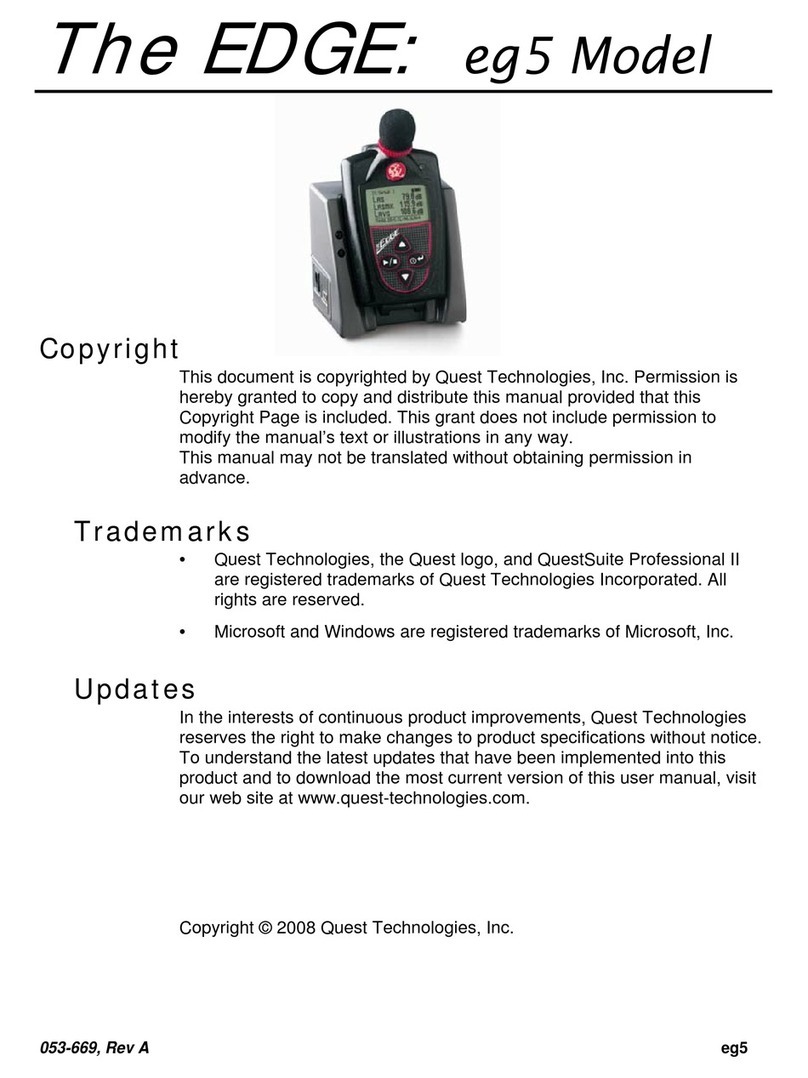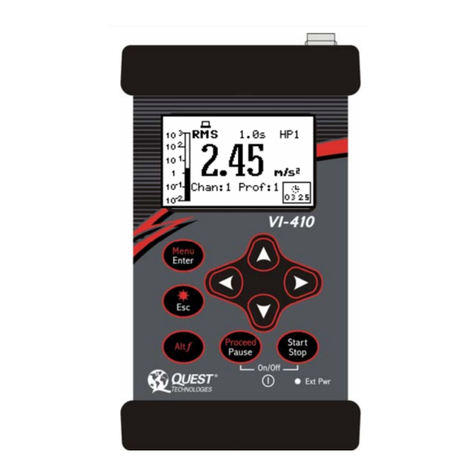
Tilescale readings are added to or snbtmeted from the dB range
level selected. Forexample, if the range selector is set at80 dB, and a
meterreading of +8 is indicated, then the sound level measured is 88
dB, Similarly, if the meter needle is at -5 dB for the same range
selector setting, a noise levelof 75 dB is indicated. In the latter case,
better readability will result if tile 70 dB range is selected, In this
case the I'teedle will point to +5 dB. again yielding Lhe nleasuren'tent
of 75 dB.
Most meter readings can and should Im taken with the slow
meter response because the nleter needle is more stable and easier to
read. The fast response is intended for measurement of short dura-
tion noises, such as moving vehicles or impulsive sound, where tile
noise is not present sufficiently long to obtainthe maximun'_ reading
in theslow response mode. Keep in mind that for very short duration
impulse no[se even the fast i_sponse nlode lllay not be fast etlOtlgh to
indicate the truc peak noiselevel.
Effectof Operator'sPresence
Any objector surface can act _n a reflectorfor sound. An
operator close toasound level rglierol)hont_ ¢2allalso Dea reflector,
causing areadirtgerror. When the souz'td to be rneasLired is directional,
thesmmd level reading can be affected by the relative position of
meter and observer. The meter shouldnot be held hetweell the noise
source and the observer because ofsound reflections frolll tile body.
The meter should he held away from tim body or mounted on a tri-
pod with microphone pointedupwardalmost perpmldicuhr to noise
o
source (70 from path), keepingtile body out of the noise path
Effect of Backgromld Noise
If thesonnd level frorn a imrticular source is to be determined,
all surrounding sources of hoist! should,its nearly as possib/e, he
reduced or eliminated,When it is notpossible to eliminate snrrmmd.
ingnoise, tile curve shown in Figure 6 may be used to correctfor the
presence of this noise.
Use With Windscreen
Toprevent wind blowingacross the microphone mid causing the
erroneous measuren_ent ofsotlnd level,tlSe theModel WS-3micro-
phone Windscreen with the sound level meter. The windscreenis
made of reticulated polyurethane foam for the reduction of ambient
wind effects, and can also protect tile microphone underdusty, oily
or humid conditions,Tile screen is simply pushed onto tile micro-
phone when needed. Acoustic attenuation effect of tile windscreen
ontile meter reading is small and is shown ill Figure 7,
8






























